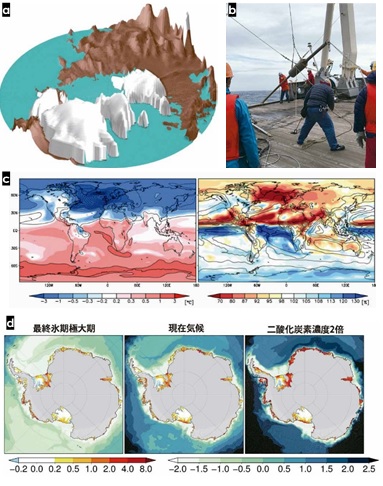Paleo-environmental Research Section


Professor Ayako Abe-Ouchi Professor Yusuke Yokoyama
Understanding past environments is key to projecting future changes. Thus, we investigate climate and earth surface systems over the past period, during which time global climates have fluctuated dramatically with glacial- interglacial cycles and accompanying changes in atmospheric greenhouse gas levels. Combined observational and modeling studies are a unique feature of CESD. Various geographic areas are targeted for collecting samples including South and South East Asia, Pacific coral reefs, and Antarctica. A state-of-the-art climate model (MIROC) is used for paleoclimate studies, whereas solid earth deformation modeling to understand glacio-hydro-isostatic adjustment (GIA) is employed to quantitatively deduce past ice volume changes. Studies provide information about the extent of the uniqueness of the current climate conditions and help understand the climate system from the past to future. Our group is also involved heavily with international collaborative programs, such as IPCC, PMIP, PAGES, IODP, IGCP and SCAR.
Ongoing Research Themes
●Glacial-Interglacial cycle over the last 1.5 million years
●Millennial time-scale climate variability
●Stability of Antarctic Ice Shee
Research examples in Paleo-environmental Research Section

a. changes in Northern Hemisphere ice sheets
b. marine sediments over the Southern Ocean,
c. abrupt climate change simulated by climate model
d. interaction between ice sheet and ocean around Antarctica









